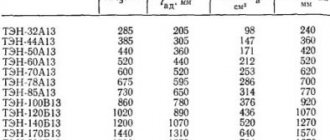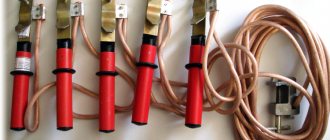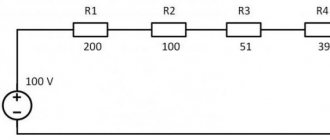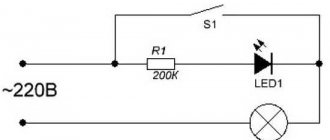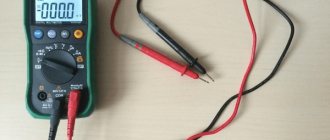The heating element is a heating element that heats water to the required temperature during washing. It is located at the bottom of the device, and due to various circumstances it can fail, especially with poor quality water and active use at the maximum washing temperature. Replacing the heating element is easy to do on your own, we will talk about this in the material, give recommendations and valuable advice.
It is better to entrust the repair of washing machines to professionals!!!
We present to you our unique catalog of private craftsmen and service centers —
Select your city and artist in the filter: by rating, reviews, price!
How do you know what needs to be replaced?
To identify a malfunction of the heating element, you need to make sure that the water is not actually heated. To do this, 15 minutes after starting the wash, touch the door with your hand, and if it is cold, this indicates a malfunction of the heating element. This is the only visible sign by which the user can independently identify the lack of heating.
Many models of washing machines have a self-diagnosis system that displays an error code when a malfunction is detected. Error coding varies from manufacturer to manufacturer, so to decipher the code you will need to read the instructions for your washing machine model.
The causes of heating element failure may be the following:
- violation of the integrity of the wiring, as a result of which the heating element does not receive signals about the start of operation and the need for heating;
- burnout of the heating element, which requires immediate replacement;
- breakdown of the thermostat responsible for determining the water temperature;
- accumulation of a thick layer of scale and salt deposits, which significantly reduces the thermal conductivity of the metal. The heating element cannot give off the necessary heat and heat the water to the specified temperature. Then more electricity is used for heating, and as a result of overvoltage, the heating element burns out.
Where is the heating element located?
Users often encounter difficulties in locating the heating element. In different models, access to the heating element is provided through the rear or front panel. To find out the location of the part in your device, read the instructions or inspect the washing machine.
Initially, inspect the back panel, and if the removable part is large enough, most likely the heating element is located there. If only a small cover is removed from the back, then try looking for the heating element under the front cover.
The rear location of the heating element is typical for appliances from the brands Zanussi, Candy, Hotpoint Ariston, Indesit, Ardo and Electrolux. Manufacturers Bosch and Samsung in most models place the heating element under the front panel. In top-loading equipment, it is necessary to unscrew the side wall to provide access to the element.
Algorithm of actions
We will give detailed instructions for checking and replacing the heating element a little lower, but now we suggest you familiarize yourself with the universal algorithm of actions, regardless of the specific brand of washing machine.
Table. Procedure for replacing the heating element.
Determining the location of the heating element
| Repair stage | Brief description of actions |
| Manufacturers install heating elements in various places. Getting to some is not difficult, but in other cases you have to disassemble almost half of the unit to do this. This is done deliberately; using this method, manufacturers force consumers to repair machines only in specialized workshops. How to find out where the heating element is located? Move the machine aside and inspect the back wall of the case. If there is a large metal plug on it, then it is easy to remove the heater - remove the cover and gain access to the fixing screws. If the case is solid, you will have to remove the entire front panel. It will take much more time to dismantle the elements than it takes to replace the heating element. | |
| Before starting work, be sure to unplug the washing machine from the socket. Unscrew all elements of the washing machine body that prevent access to the heater. Inspect the device carefully. If you don't trust your memory, it is recommended to take a photo of it. Some types of heating elements may contain temperature sensors; this complicates the replacement algorithm and increases the cost of repairs. | |
| Additional performance check and installation of the heater | The heating element can fail for several reasons; you must make sure that it is faulty. We will explain how this is done a little further in this article. Installation of elements is carried out in reverse order. Pay attention to the condition of the rubber gasket; it may be damaged when removed. If you have such a situation, then you need to change it too. It’s better to do this right away than to discover leaks under the washing machine during operation. They can provoke very unpleasant consequences. |
Before starting work, it is recommended to familiarize yourself with the technology for checking the serviceability of the heating device.
Preparation
Before you begin to unscrew the case and replace the part, you need to prepare the tools and components for replacement.
It is better to entrust the repair of washing machines to professionals!!!
We present to you our unique catalog of private craftsmen and service centers —
Select your city and artist in the filter: by rating, reviews, price!
Before starting repair work, completely disconnect the washing machine from the power supply, and also disconnect the water supply and drainage hoses. To be on the safe side, you can drain the remaining water from the tank so that, if necessary, you can put the unit on its side or tilt it and avoid leaks and short circuits.
What will you need?
Required tools:
- Phillips and flat screwdrivers;
- lubricant;
- multimeter;
- 8mm socket and ratchet wrench.
It is recommended to buy an original heating element from the manufacturer, this way you will insure yourself against fakes and low-quality spare parts that quickly fail.
If the equipment is still under warranty, do not carry out repairs yourself; it is better to contact a service center, where, with a warranty card, they will replace it free of charge.
Step-by-step instructions for removing the heating element
Initially, check that the equipment is disconnected from communications and completely drain the water from the tank through the emergency hose. Only after these manipulations proceed to replacing the heating element:
- Unscrew the rear cover bolts and find the heating element. It is easy to detect since the shank is located in the visible part of the body;
- disconnect the wiring;
- unscrew the nut in the middle, insert the pin inside, pressing it firmly or tapping it with a hammer;
- Using a knife or screwdriver, carefully pick up and pull out the heating element from the tank;
- Next, you need to check the functionality of the element using the video instructions.
How to choose a new heating element, what you should pay attention to
To choose a suitable heating element that will last a long time and will not fail, you must be guided by certain selection criteria.
After removing the element from the washing machine, measure its working length from the metal base to the end, also determine the indicated power consumption figure and find the hole for the temperature sensor. The length of heating elements varies within 150-310 mm, power within 1600-2050 W, in some models reaches 3000 W. If your unit has a curved element, the angle and location of the bend must be taken into account.
The optimal solution for purchasing a similar item would be to remove it and compare the parameters directly in the store. Usually, a consultant can help with the choice and will select a completely identical heating element from the warehouse for a specific model. If the element has a numerical or letter marking, use it as a guide.
It is better to entrust the repair of washing machines to professionals!!!
We present to you our unique catalog of private craftsmen and service centers —
Select your city and artist in the filter: by rating, reviews, price!
When purchasing from online stores, be guided by the cost and do not buy cheap options, since such counterfeits will not last long and will soon require a new replacement.
Determining where the heating element is located
So, first we need to determine where the heating element is located in the Samsung washing machine.
Please note that on Samsung the heating element can be located both in the front and in the back. And since it’s much easier to remove the back cover—it’s just a few unscrewed screws—it makes sense to start with the back cover.
For example, on Samsung Diamond washing machines with a load of up to 5 kg, the heating element is located exactly at the back. But on Samsung Fuzzy models, such as S821 and S621, the heating element is located in the front.
Advice: do not rush to buy a new heating element even before disassembling the machine; first diagnose the breakdown. Perhaps the problem is not in the heating element, but in the temperature sensor.
Step-by-step instructions for installing the heating element
To install a new element, follow this sequence of actions:
- Insert the new heating element into the niche and check that it fits tightly into place and does not wobble. It is necessary to ensure tight fixation without distortions or gaps;
- holding the element, tighten the nut until it stops, but without strong force so as not to squeeze out the element;
- attach the wires and terminals to the shank in their original places;
- turn on the test washing program with heating up to 60 degrees. If the water is heating up (this can be checked by placing your hand on the door 10-15 minutes after the start of washing), then secure the back panel and tighten the body.
When installing a new part, perform the actions carefully, check that the heating element is accurately inserted into the fastenings. If installed incorrectly, it may be located above the required level, and during the washing process there will be friction against the drum, which will lead to serious malfunctions of all elements of the device.
Some professional craftsmen recommend securing the position of the heating element with sealant to prevent leaks. However, we note that with proper installation and a tight fit, leaks should be excluded even without the use of sealant.
How to remove the heating element from the washing machine
Replacing the heating element in a washing machine, if it is at the back:
- Turn off the power to the equipment and drain any water that may remain inside (a drain filter is provided for this).
- Unscrew the fixing bolts of the rear panel of the machine body. Under the drum you can see the tail of the heating element tube of the washing machine. Take a good look at the contacts or take a photo of the circuit so as not to confuse the polarity when installing a new element.
- Disconnect the wires. There should be a fixing bolt - twist it (located in the center of the tail).
- Lightly press the fastener so that it sinks inward. Grab the electric heater with your hands and pull it towards you. If the tubes do not give in, then loosen the seal (a bayonet or a thin screwdriver will come in handy).
- Clean the connector for the part - debris and scale may have accumulated in it.
- Insert new part.
- Secure the fasteners.
- Connect the contacts in the same sequence in which they were on the old heating element. Do not reverse the polarity.
Important! If you are not completely sure that the reason for the cold water is not the heaters, then when disassembling, pull it out as carefully as possible. Do not break the contacts, otherwise the element will definitely become faulty.
To check whether the new part works and whether all connections are tightly secured, start the washing machine. It is recommended to run the wash cycle at different temperatures. After checking, screw the cap back on - the job is done.
How to replace the heating element in a washing machine if it is on the front:
- Unplug the electrical cord from the outlet.
- Unscrew the fastenings of the top cover - they are located on the back of the washing machine body. Then disassemble the front panel by pulling it towards you and up.
- Pull out the washing powder box. This will free up access to the screws securing the control panel - it will also have to be disassembled.
- Remove the false panel - it blocks the passage to the garbage filter. Most often it is fixed with plastic rivets.
- For this work you will need a thin screwdriver - pick up the seal clamp on the hatch doors and, having disassembled the fastening, screw the cuff into the drum.
- To avoid breaking the wiring of the hatch blockers, disconnect the contacts and completely remove the UBL.
- Unscrew the bolts securing the front wall and, moving it slightly forward, remove it.
- You can see part of the heating tube under the tank. Similarly with the previous algorithm, take a photo or take a good look at the contacts.
- Unscrew the nut and push the bolt inwards. The heating element is easily removed from the connector.
- Remove all debris from the tank, get rid of scale - prepare a groove for installing a new element.
- Installation of the tubular heating element and assembly of the machine is carried out according to a similar scheme in reverse order.
Don't forget to do several test runs in different modes. If there are no difficulties with heating the water, then you can put the lid in place - the machine is ready for further use.
Checking work
After installing the new heating element, you need to make sure there are no leaks and proper heating during the washing cycle. To do this, run a test program and check that the heating element heats the water to the required temperature without delay.
Let's also consider how to check the technical parameters of the heating element and what values are considered normal. You can carry out the procedure using a multimeter.
The standard indicators of the heating element vary within 20-40 Ohms, based on the declared power of the equipment. In powerful models, the resistance can reach 60 Ohms. When taking measurements, if the device shows less than 20 ohms, this always indicates a breakdown and the need to replace a worn out or burnt out element.
To check with a multimeter, disconnect the equipment from electricity and disconnect all wires from the element. Connect the measuring device to the terminals of the heating element, and check the displayed value with the standard indicators.
How to replace a heating element using the example of the Bosch brand
It should be noted that you can remove the heating element from a Samsung washing machine by following these instructions. Since many Samsung washing machines have a heating element located in a similar way.
The work order will be as follows:
- First of all, you need to turn off the power to the washing machine;
- To get to the heating element, you need to remove the front panel. The first step is to remove the top panel, to do this you need to unscrew several hex screws. To speed up the process, you can use an electric screwdriver;
- The next step is to remove the detergent dispenser. This can be done by pressing a special latch lock;
- Next you need to remove the front wall. To do this, you will have to unscrew several screws; this will allow you to remove the control panel, which can be removed upward without disconnecting the wires. Then you need to remove the bottom panel. Then you need to disconnect the cuff on the hatch; it is secured with a spring clamp. They vary depending on the version, but for all models you need to pull it. After which the cuff moves inward, and all the screws holding the front wall and blocking the door are unscrewed;
- The heating element is located at the bottom of the tank. You need to disconnect all the wires that connect the heating element. To remember how they are connected, you can take a photo on your phone, this will help you connect them back correctly when reassembling;
- The heating element nut must be unscrewed. You should not unscrew it all the way, this will allow you to remove the heating element by pressing on the gasket;
- The next step after removing the heating element is to remove the thermostat. It can be installed in a new heating element. You can apply a few drops of dishwashing detergent to the seal, this will simplify the process of installing the part;
- To ensure that the new heating element fits into place correctly, you need to press it hard enough. It is secured by tightening the nut. If the seal is well secured, you can start connecting the wires;
- The final step is to install all the parts in the reverse order.
Replacing the heating element located at the rear of the drum
For many washing machines of the LG, Ariston, Indesit and Atlant brands, the heating element can be replaced through the back panel. Let's look at how you can remove the heating element from an Ariston washing machine.
In this case, the process of removing and installing a new heating element is much simpler. There is no need to remove the front wall and control panel. To remove the back cover you need to unscrew several bolts.
As in the case described above, it is best to first photograph the location of the wires. After this, you need to disconnect the wires and loosen the nut. There is no need to unscrew it completely, it should remain on the thread. Next, the pin is pressed in to remove the heating element.
Before finally assembling the washing machine, you should check whether all parts are installed tightly. To do this, you can pour water into the drum without starting the wash. If water leaks, you need to tighten the nut more tightly. And only after that complete the assembly of all parts.
In this case, the new heating element must be a complete analogue of the old one. And to simplify the process of changing a failed heating element, it is best to remove the drive belt.
For installation, it is best to purchase a new heating element; a used one will last much less, and then it will need to be replaced again.
If the heating element (heater) in your Samsung washing machine is broken, then you can determine this by the remaining dirty laundry. The machine simply cannot wash things in cold water.
You can also determine this failure yourself by the HE or TE error on the control module.
This error may indicate a malfunction of either the heating element itself or the water temperature sensor (thermistor). In this case, the wash program will be stopped because the water is not heated to the required temperature.
How to extend the life of the heating element?
To ensure a long service life of the heating element, you must follow the recommendations:
- In order to avoid salt deposits and scale formation, regularly carry out preventive measures, cleaning with citric acid or special products. With standard use, cleaning is carried out once every 4-6 months, with daily washing, clean once every few months;
- use a voltage stabilizer to protect equipment from burnout during power surges;
- pay attention to unusual sounds and vibrations, since in advanced cases the heating element may hit the housing. Sometimes you may feel an electric shock when you touch the housing.
Possible faults and solutions
If the heating element has stopped heating the water, this may be due to malfunctions that can be eliminated yourself or by contacting a service center:
- part shorted or broken. In this case, the remaining components and blocks of the washing machine may burn out, so you must immediately disconnect the equipment from the network and contact a service center to avoid the need for expensive major repairs;
- Heater circuit malfunction. In this case, heating the water takes longer or freezes during the washing process. The heating element needs to be replaced;
- malfunction of the pressure switch, which is responsible for transmitting a signal about the water level. If the sensor is contaminated with scale and there is no heating signal from it, then it must be replaced.
The video provides detailed instructions on how to remove the old heating element and install a new one in its place.
Using our step-by-step instructions and recommendations, you can identify a problem with the heating element at home and replace it using a minimal set of tools. When purchasing a heating element, choose an identical heater that matches your device model.
Where is the heater located in the washing machine?
For different types of washing machines, the heating element may be located in different places: in front or behind. To determine the location of the heating element, you can look at the diagram of the machine, which is in the instructions or find it on the Internet by the name of the brand and model. You can go the experimental route: unscrew the back panel of the machine and carefully inspect the mechanisms. The heating element itself is located under the tank and inside the tank, but its part with the terminals is visible from the outside. If it is not there, you need to remove the front panel. At the front, the heating element is also located below the tank. As a rule, the process of unscrewing/screwing panels is not difficult.
As a rule, in Indesit, Ariston, Kandy, Electrolux machines, the heater is located at the back. For BOSH, Samsung, LG washing machines, the heater is located behind the front cover.

